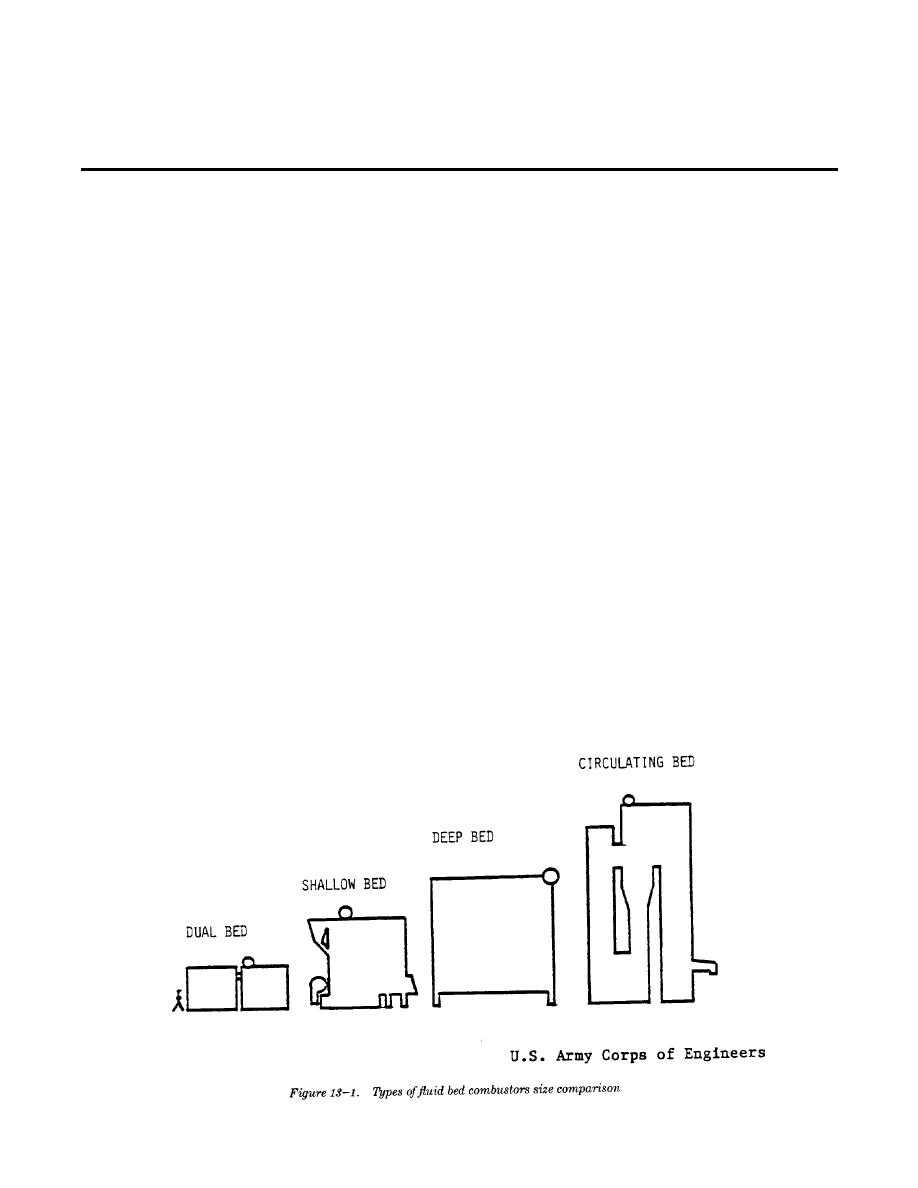
TM 5-815-1/AFR 19-6
CHAPTER 13
FLUIDIZED BED BOILERS
13-1. Fluidized bed boilers.
13-2. Types of fluidized bed boilers.
through the first and into the second and third genera-
There is no unique design. An industrial fluidized bed
tion of development. Fluidized bed technology is not
boiler could assume several possible configurations
new but has been revived in this country because of
depending on such factors as bed pressure, the choice
fuel costs and the availability of poor quality fuels.
between natural or assisted circulation, the gas velocity
Commercial and industrial power plants now have a
in the bed, fuel and air distribution systems, bed design
third type of solid fuel boiler to consider for steam
and method of achieving high carbon utilization and
requirements. Economics, fuel pricing, availability of
control of sulfur dioxide.
b. There are four types which will be given consider-
low grade fuels and environmental considerations have
made the fluidized bed boiler a viable option to
ation for control of sulfur dioxide and nitrogen oxide
evaluate along with the stoker or pulverized coal fired
emissions. These are shown in figure 13-1 and size is
units. The units can with care be designed to burn a
also compared for a 50 million Btu/hour heat imput
number of fuels including low grade coals, lignite, coal
unit.
c. The types can further be demonstrated by com-
mine wastes (culm), refinery gas, woodwastes, waste
solvents, sludge, etc.
paring them as stationary fluid bed (bubbling bed) or
circulating bed designs. To determine this type, the
burn high sulfur coal and meet environmental require-
relationship between the gas velocity and the differen-
ments without the use of scrubbers. The mixture of
tial pressure in the fluidized bed must be established.
fuel and limestone is injected in such a way that the
Figure 13-2 shows this relationship for various bed
fuel and limestone are distributed across the bed. The
designs.
d. The fluidized bed is a system in which the air
fuel and limestone are kept in turbulent motion by
upward air flow from the bottom of the furnace. The
distributed by a grid or distribution plate, is blown
furnace combustion takes place at about 1550 degrees
through the bed solids developing a "fluidized con-
Fahrenheit to 1750 degrees Fahrenheit. Control of
dition." Fluidization depends largely on the particle size
sulfur dioxide and nitrogen oxide emissions in the
and the air velocity. At low air velocities, a dense
combustion chamber without the need for additional
defined bed surface forms and is usually called a bub-
control equipment is one of the major advantages over
bling fluidized bed. With higher air velocities, the bed
conventional boilers.
13-1


 Previous Page
Previous Page
